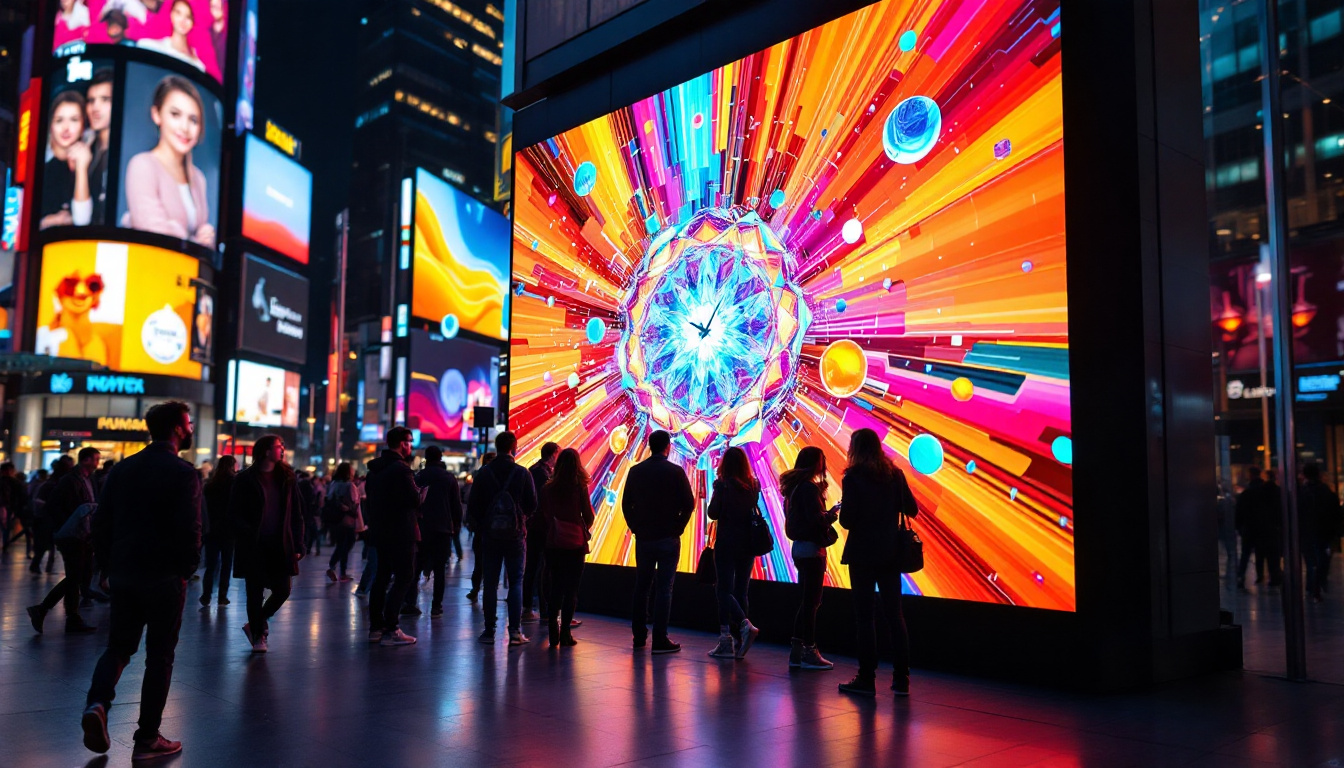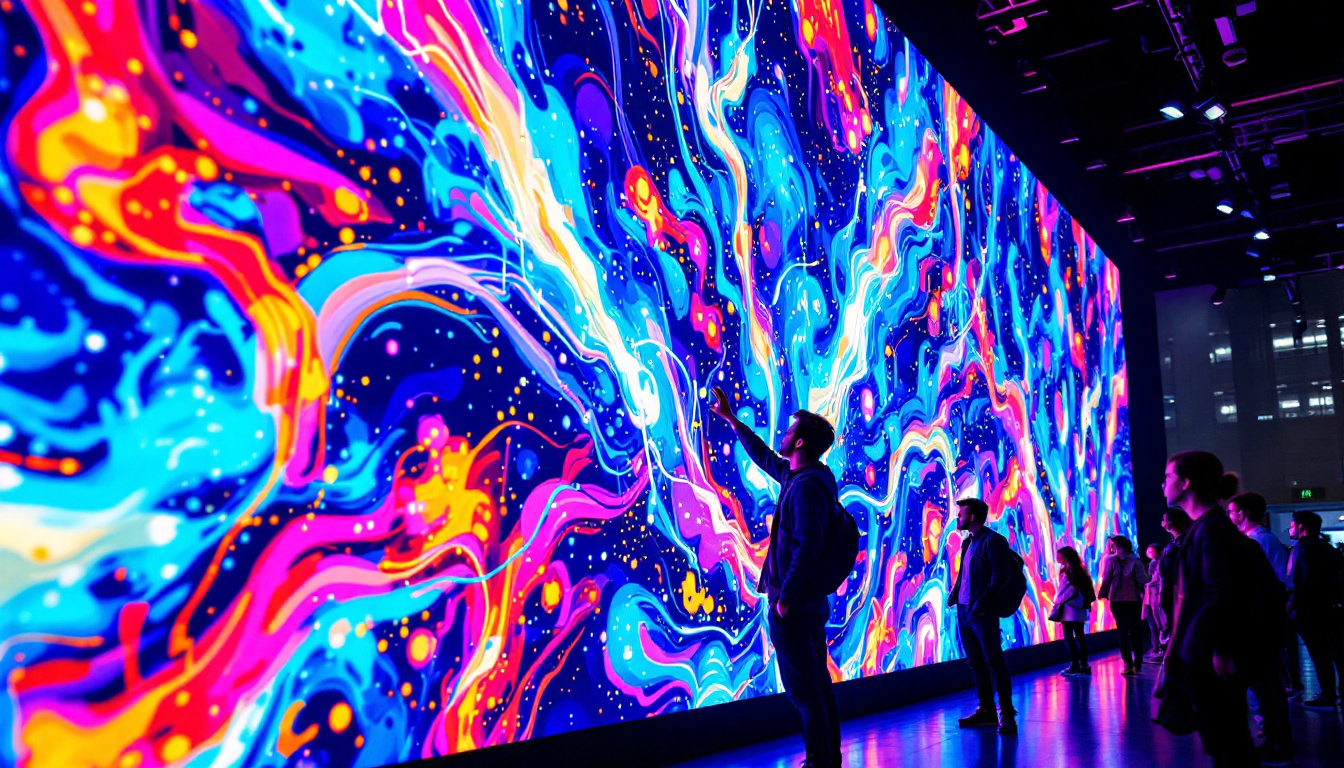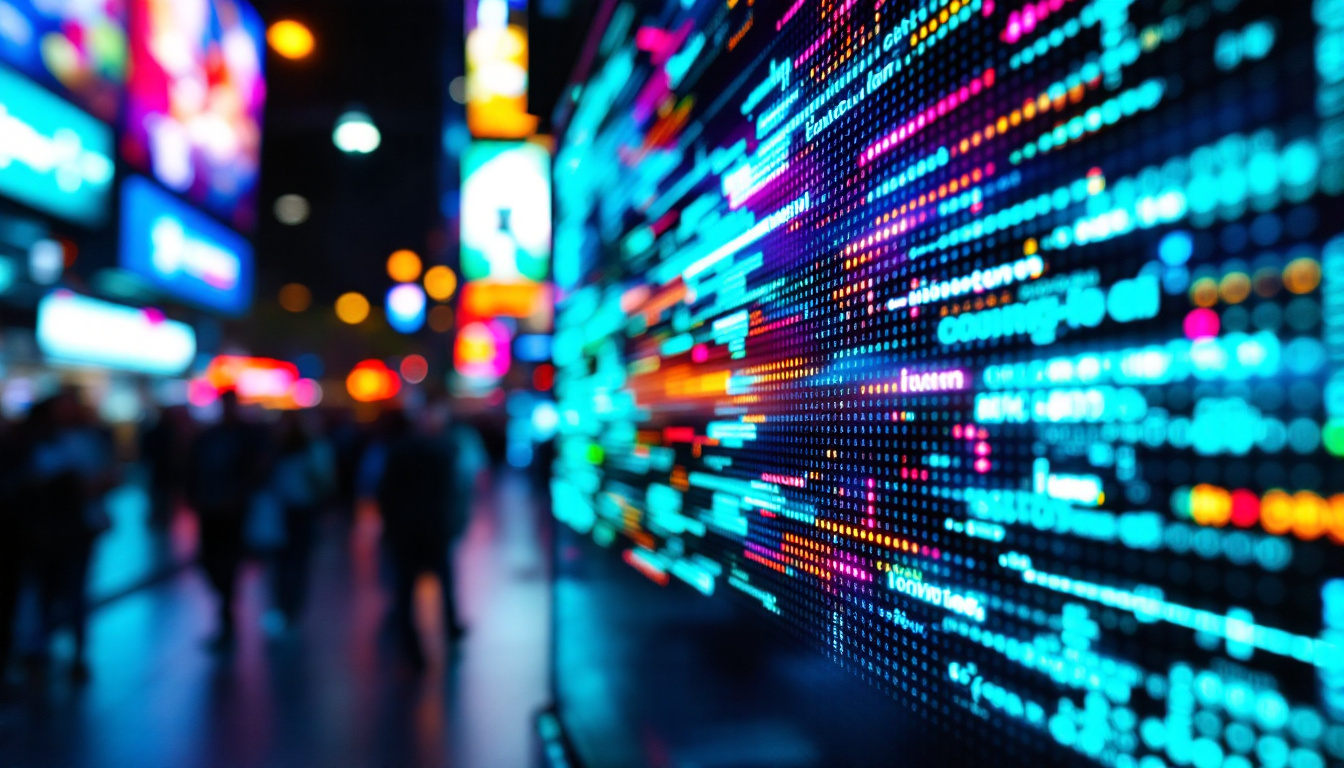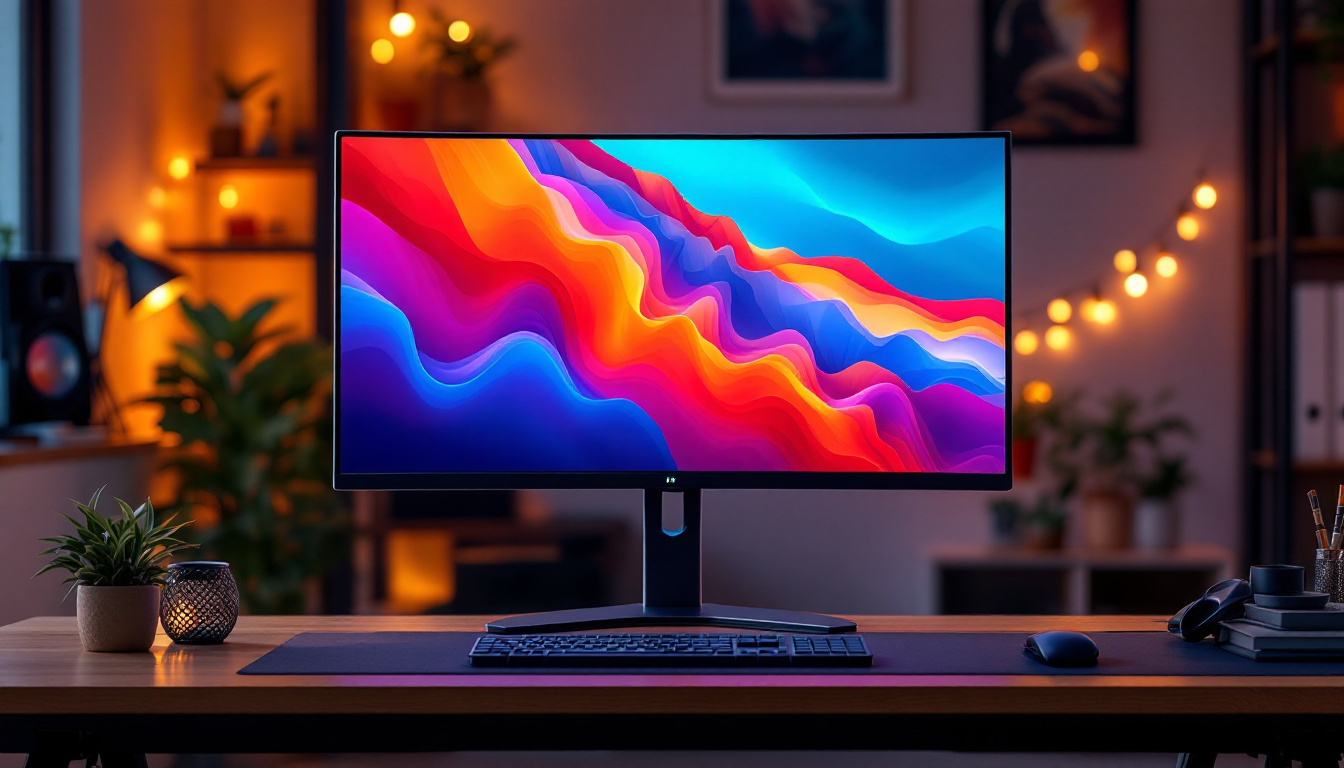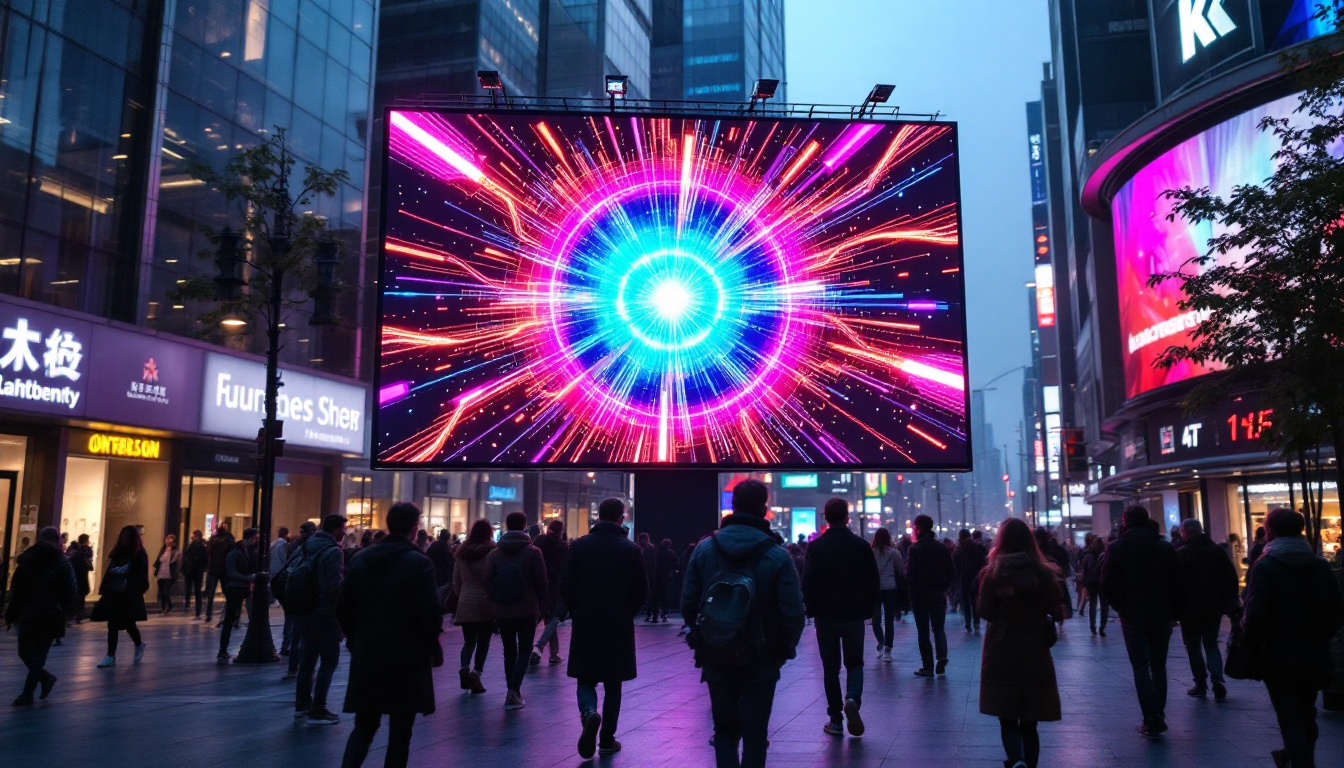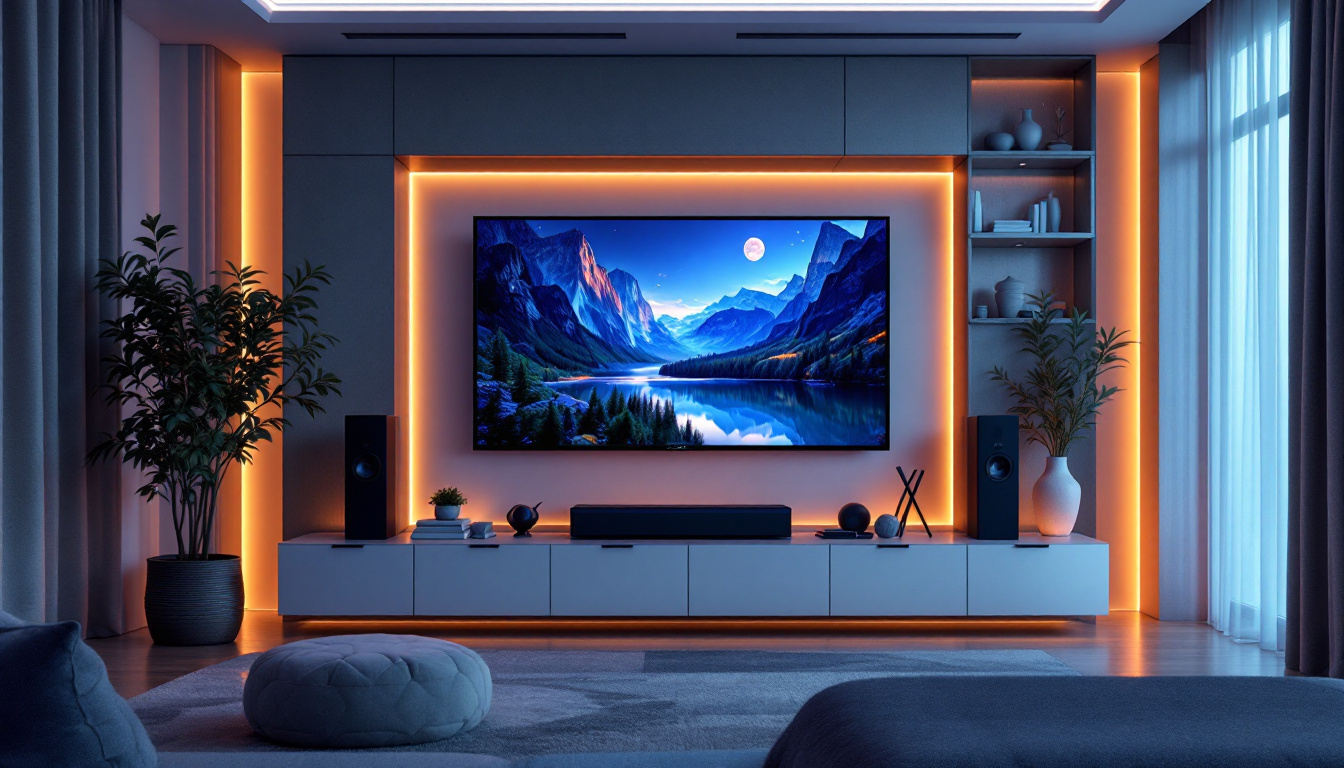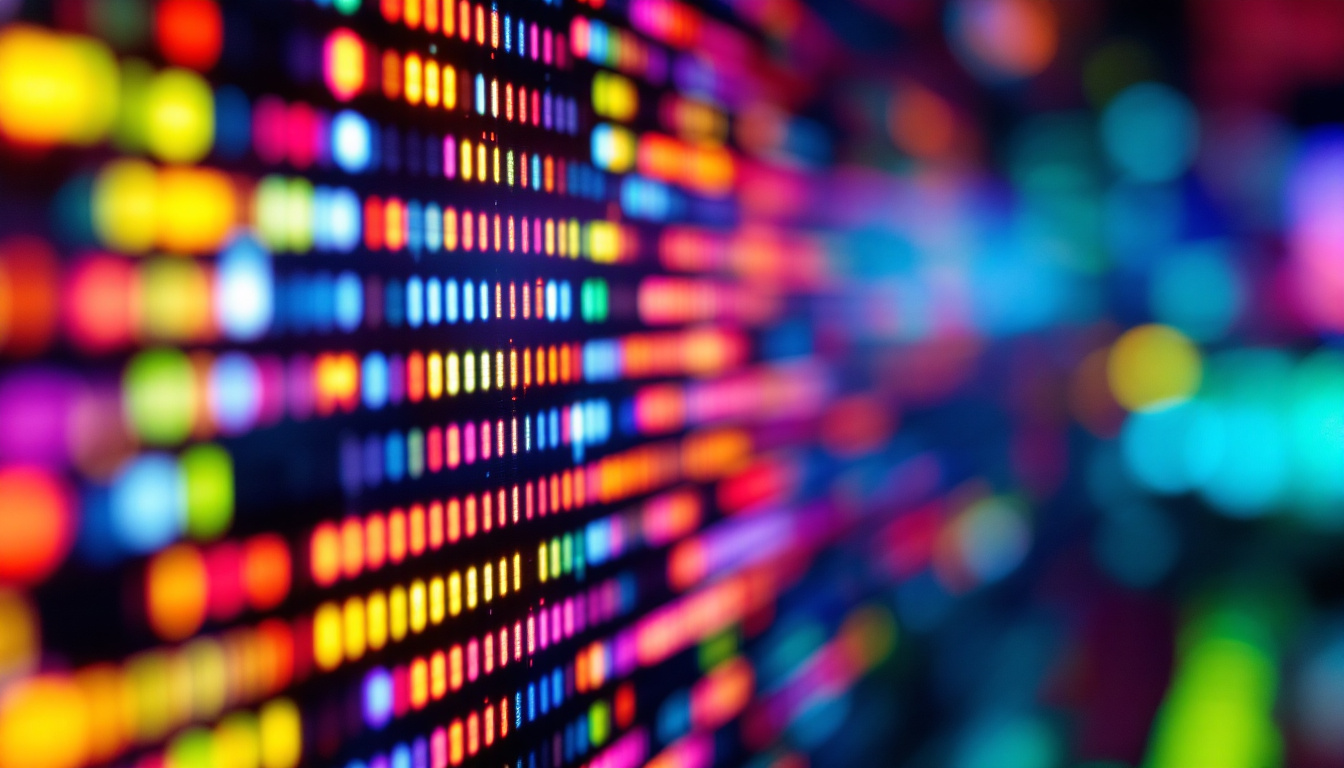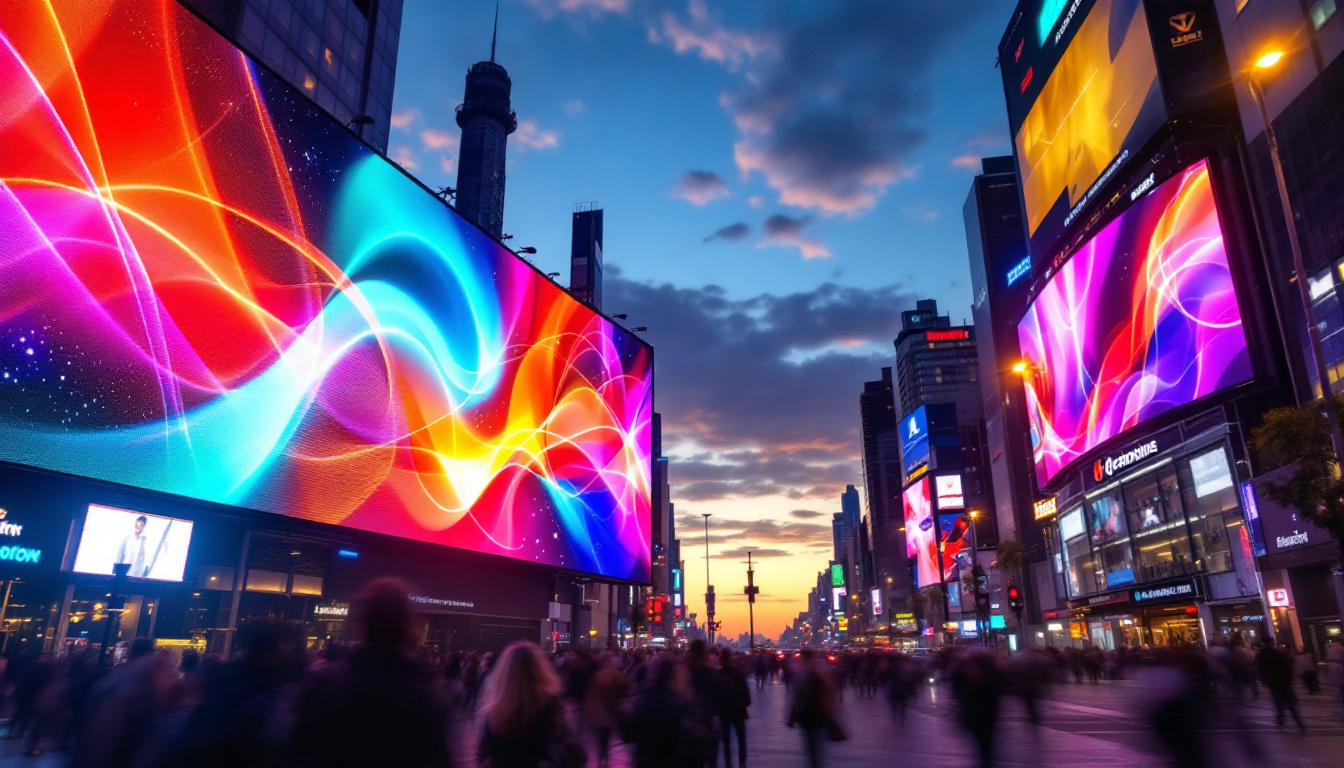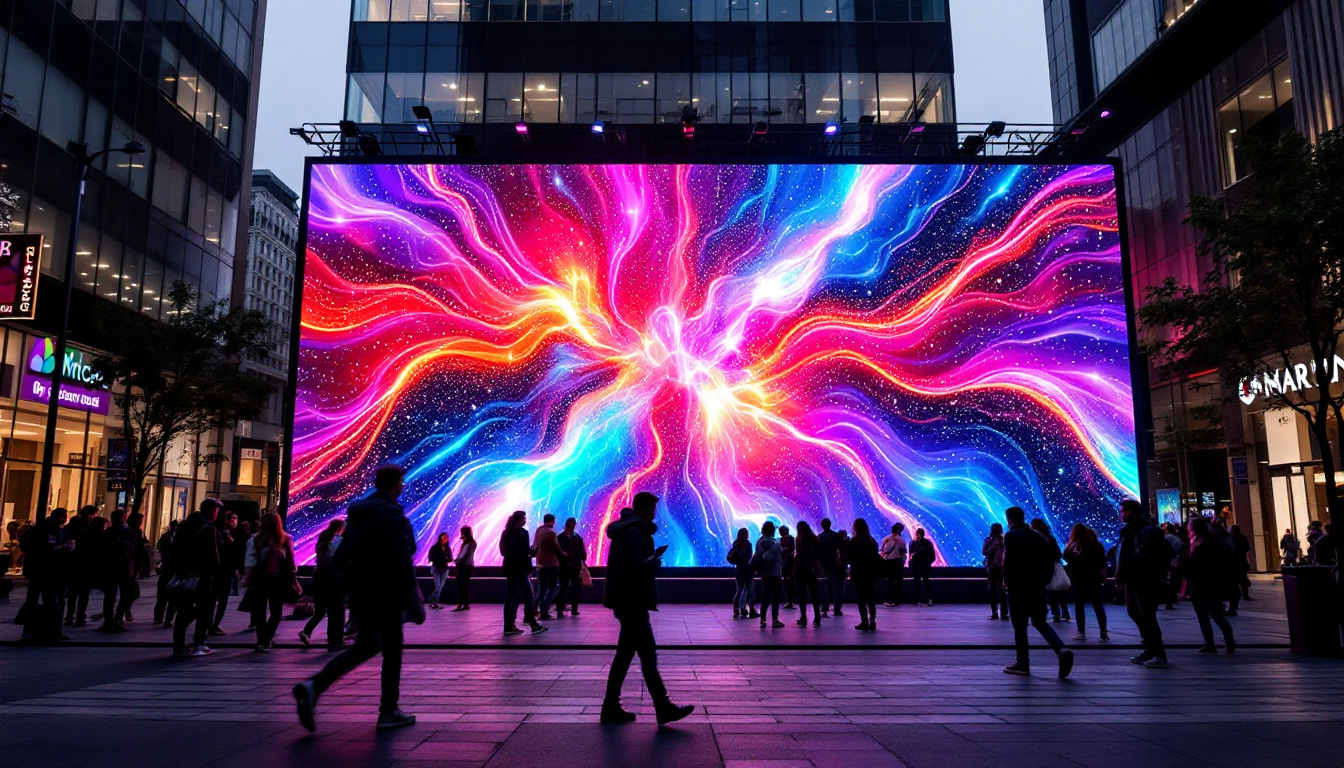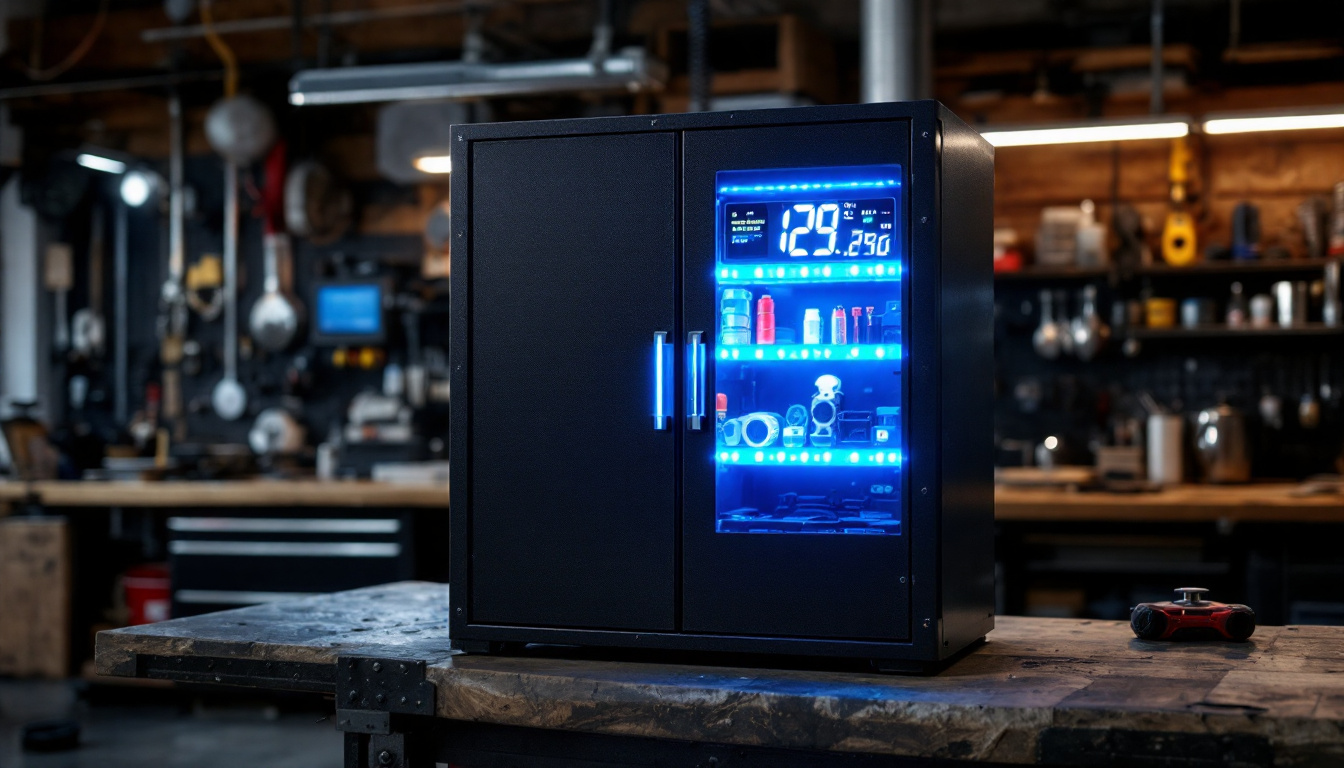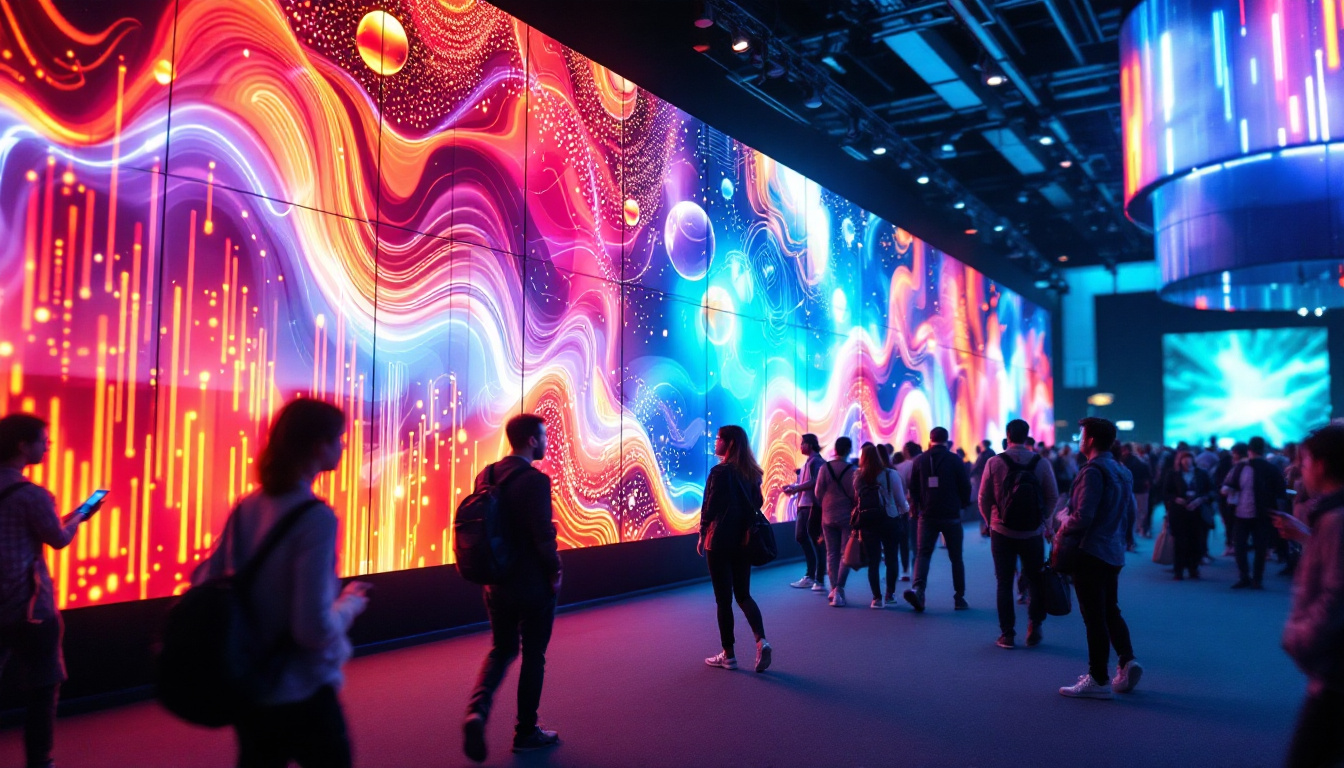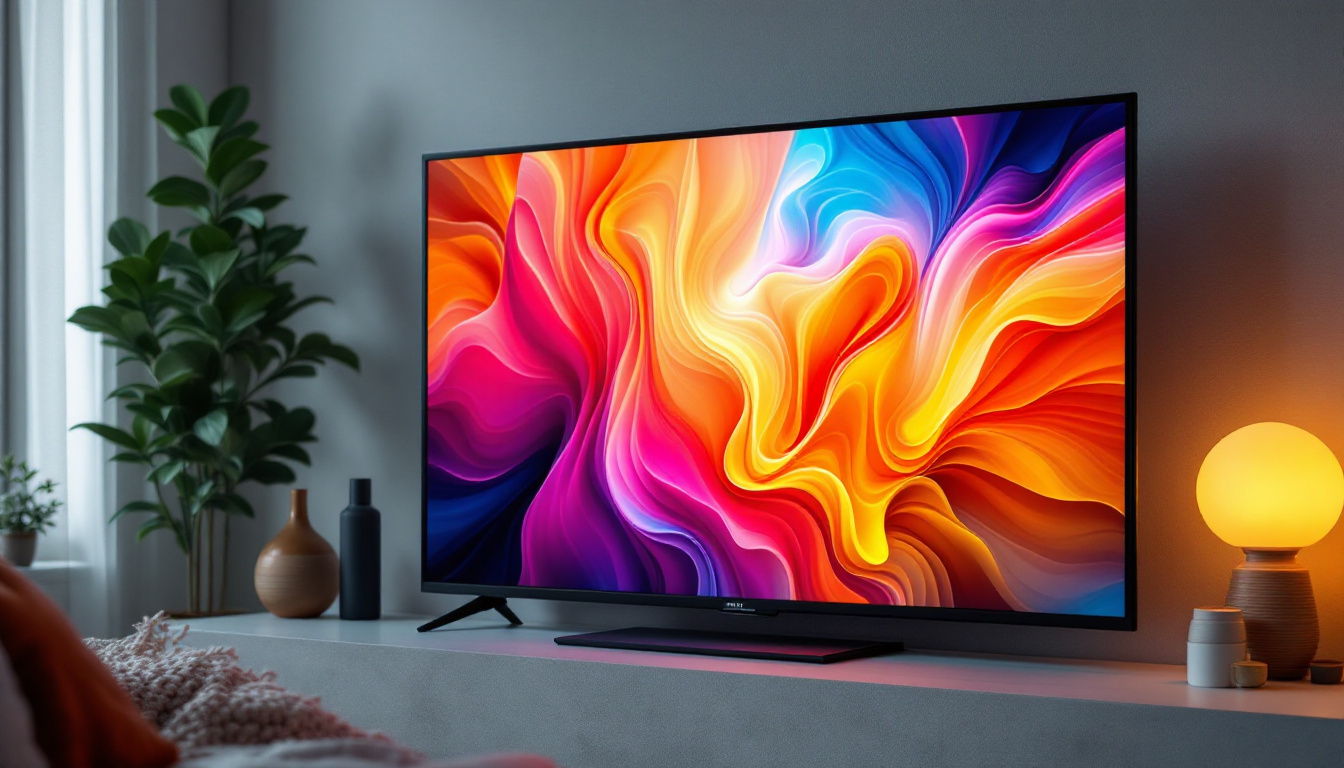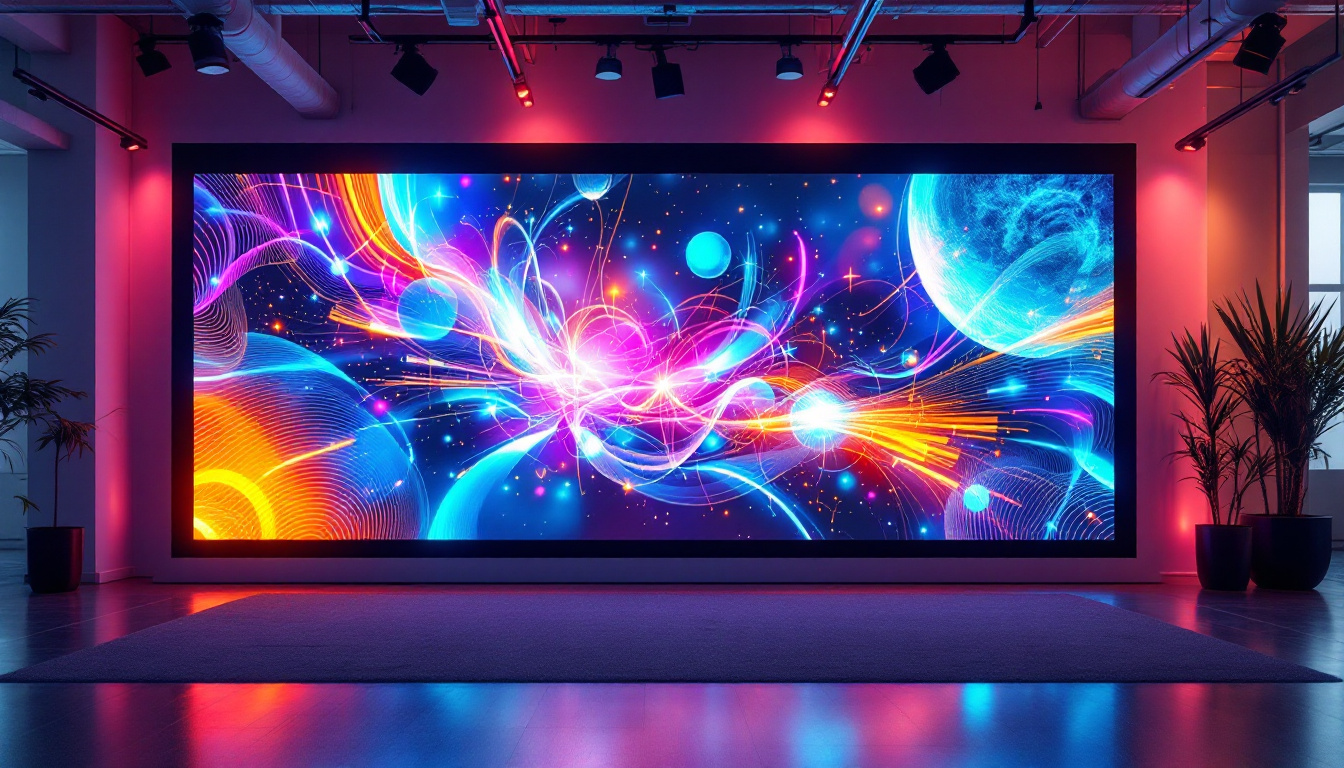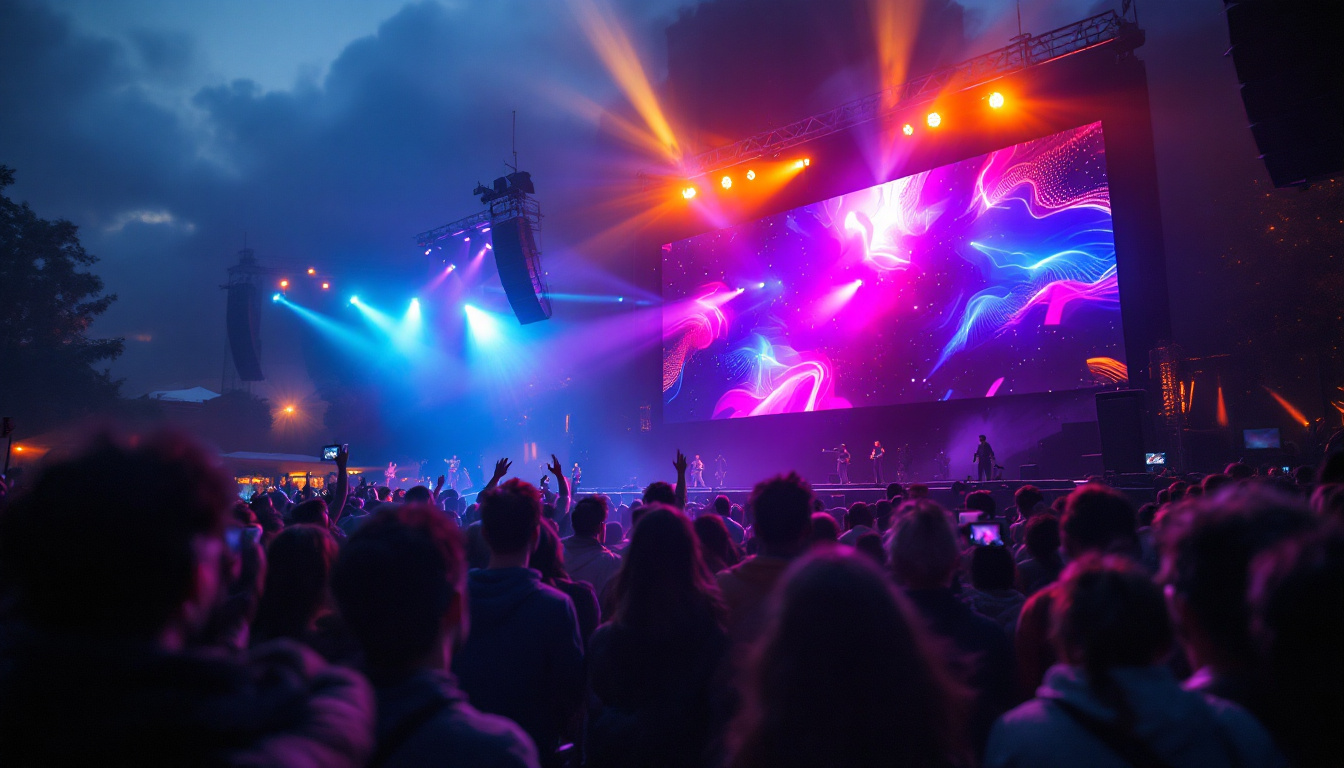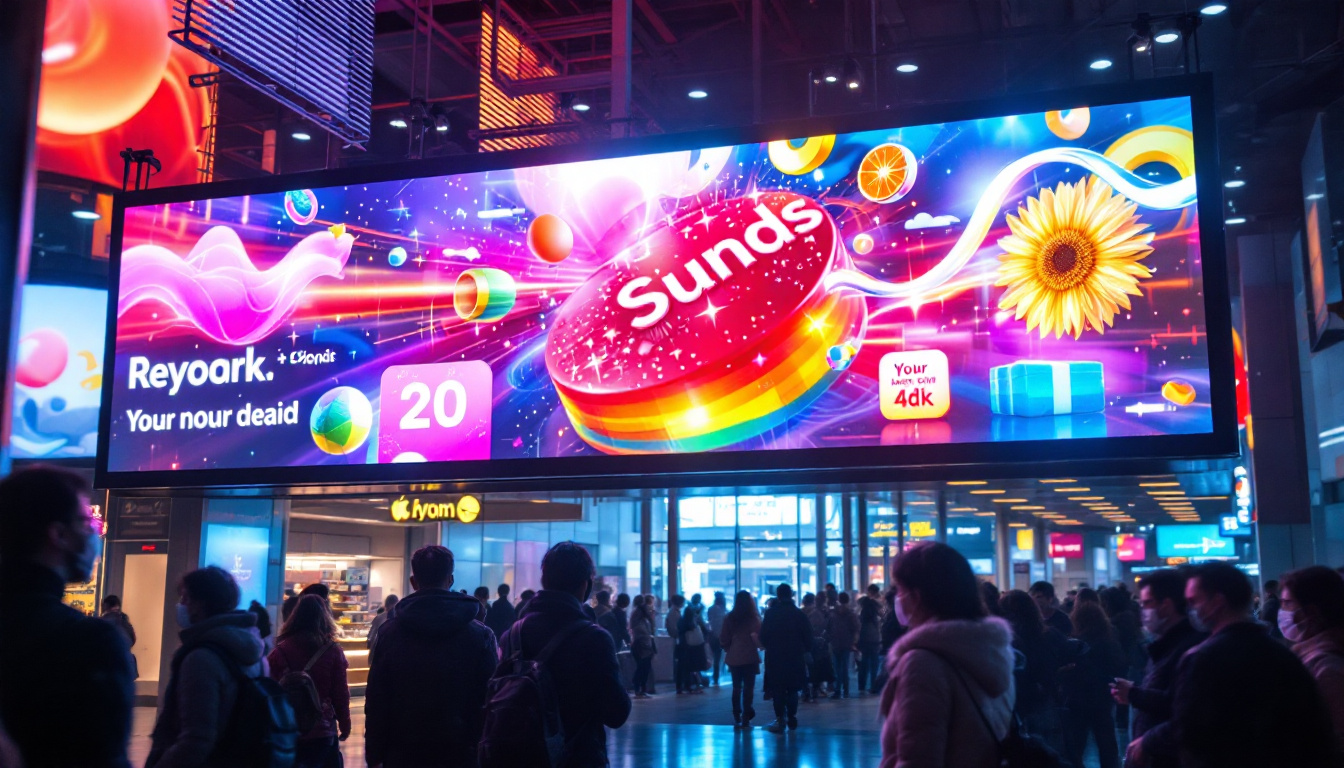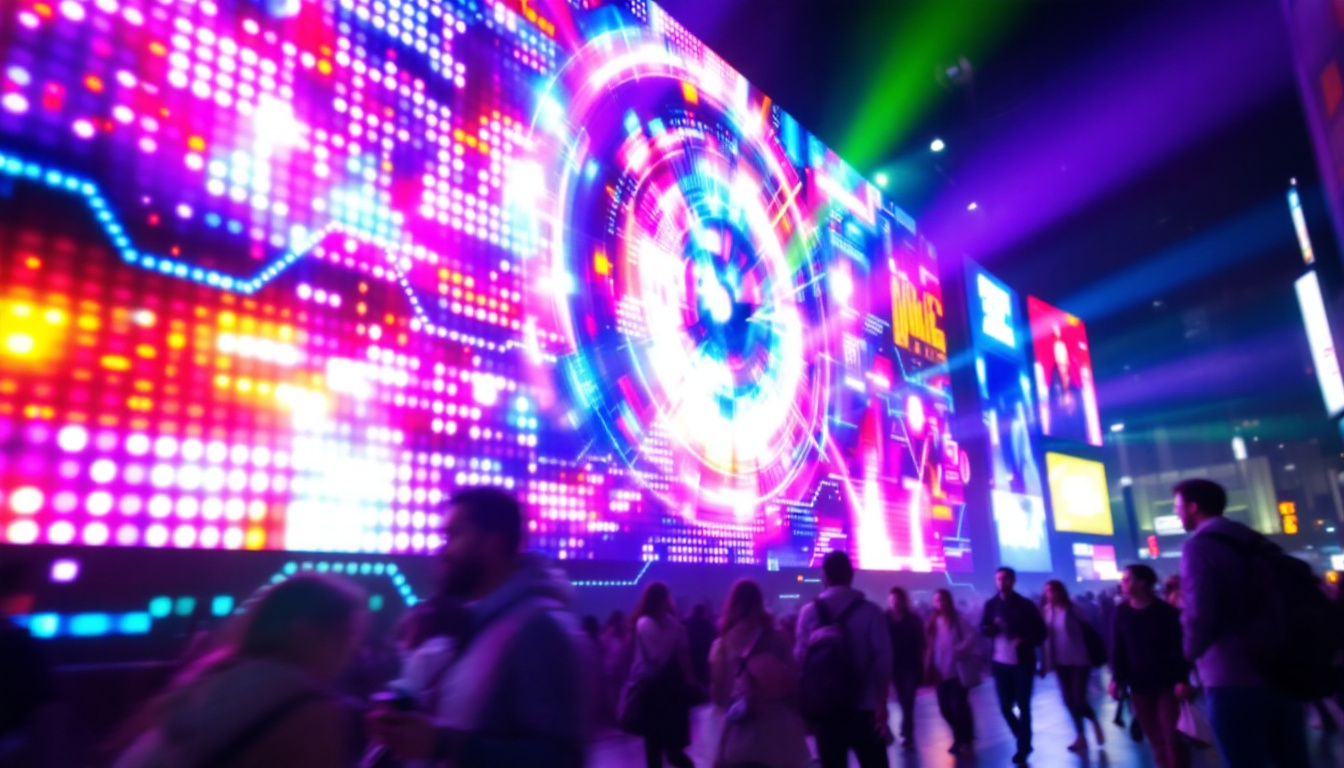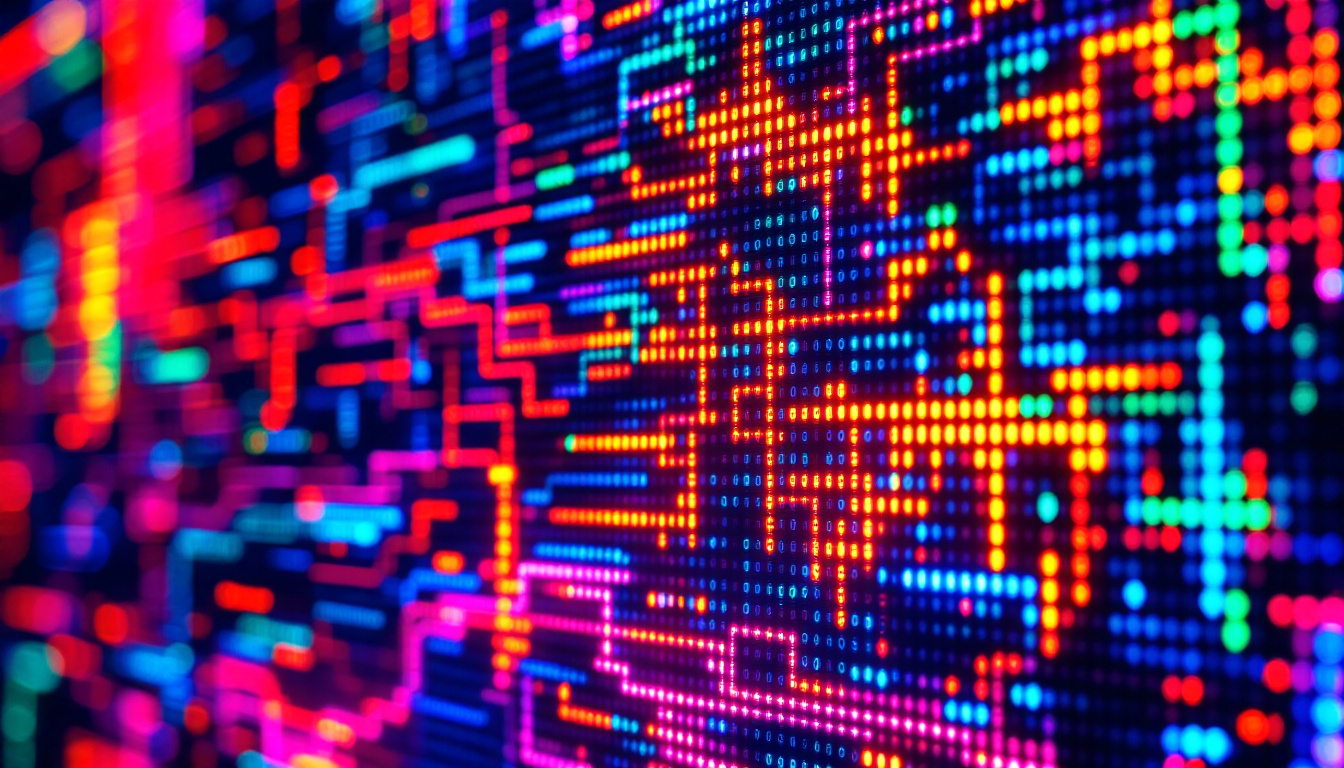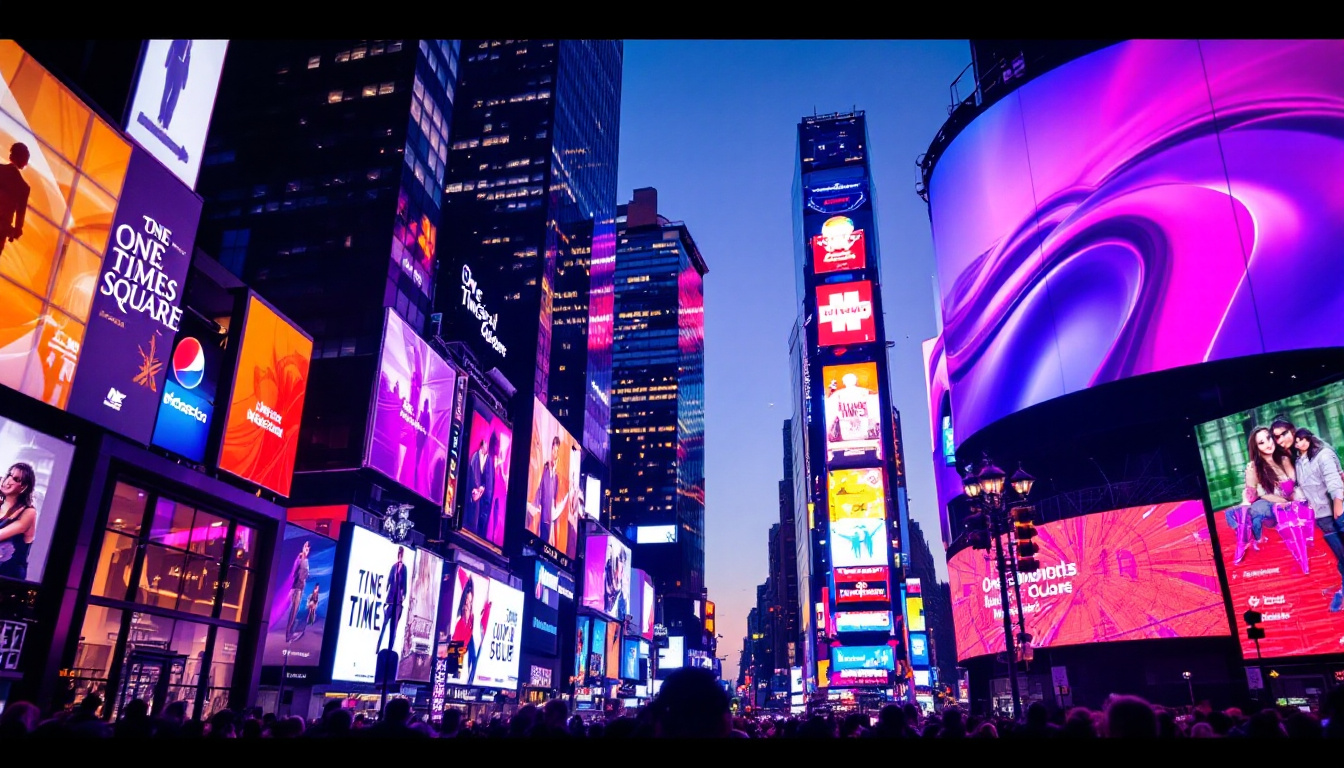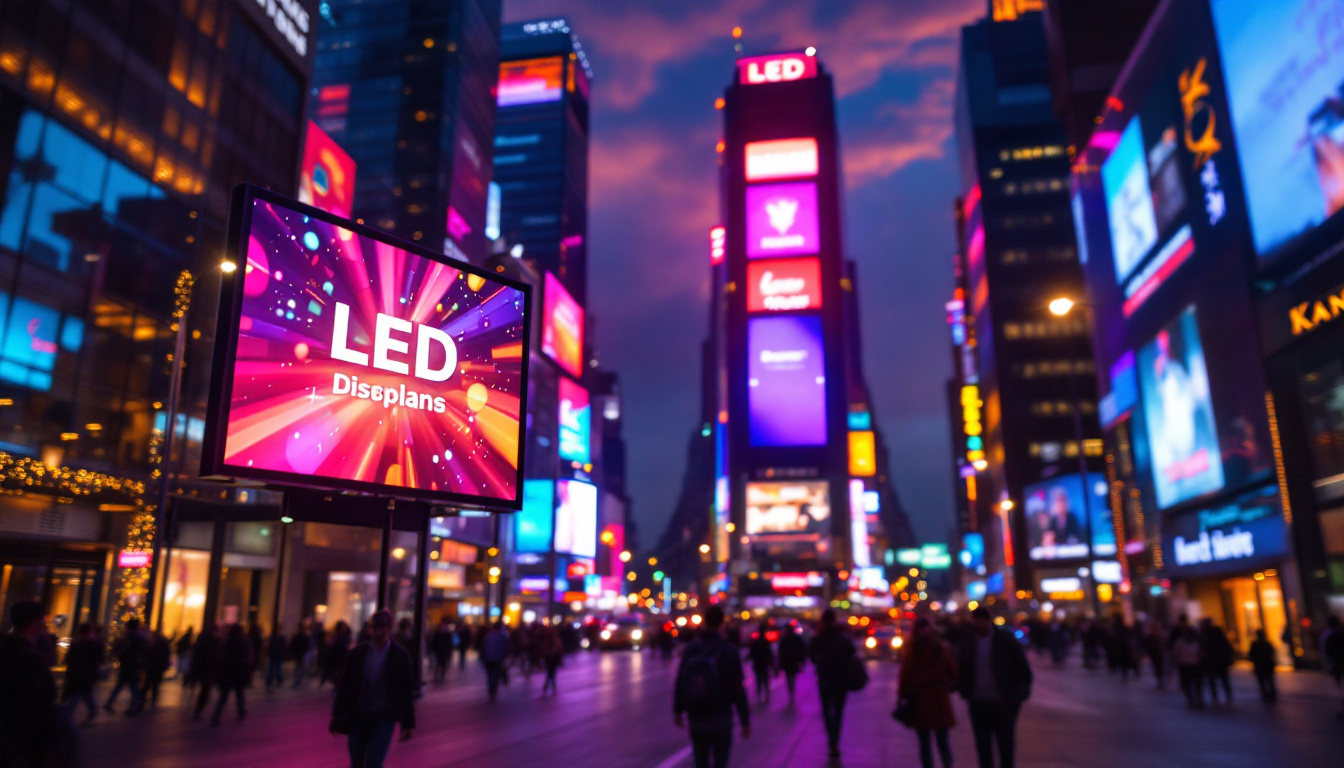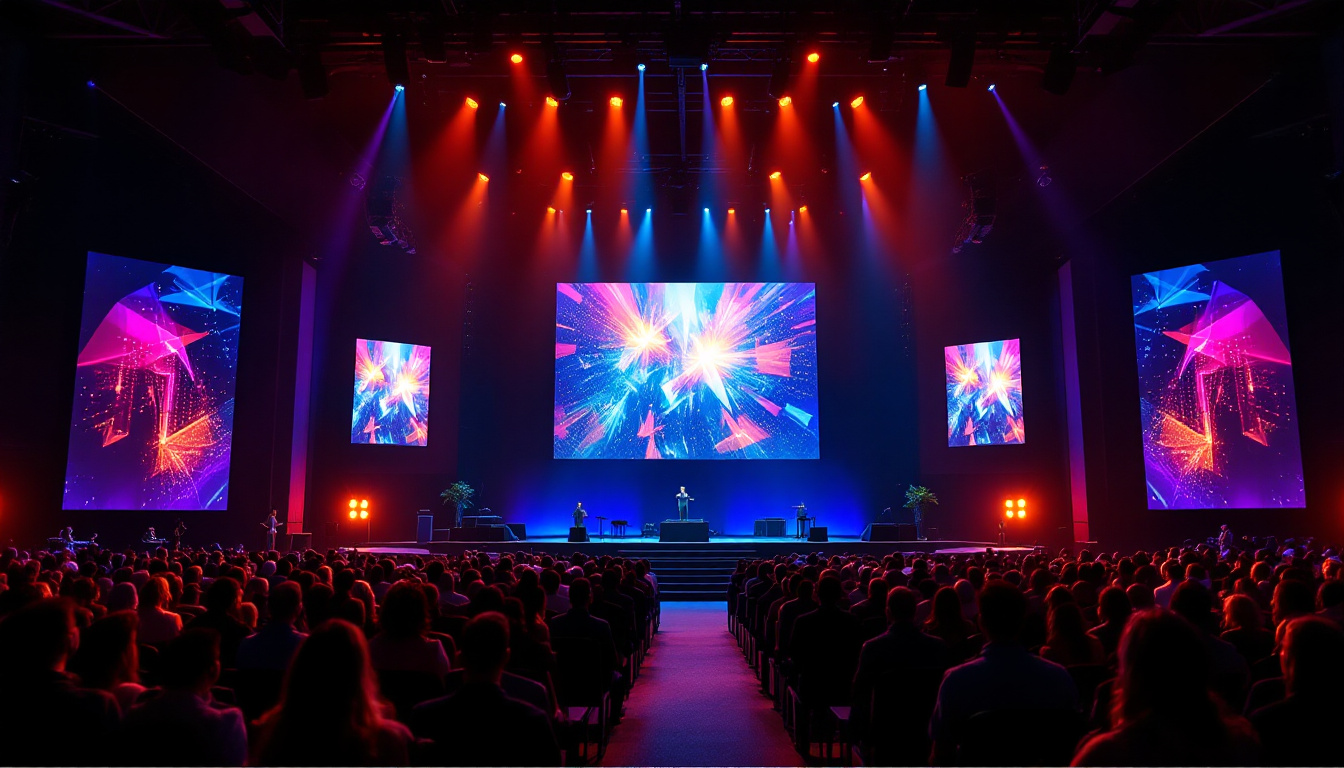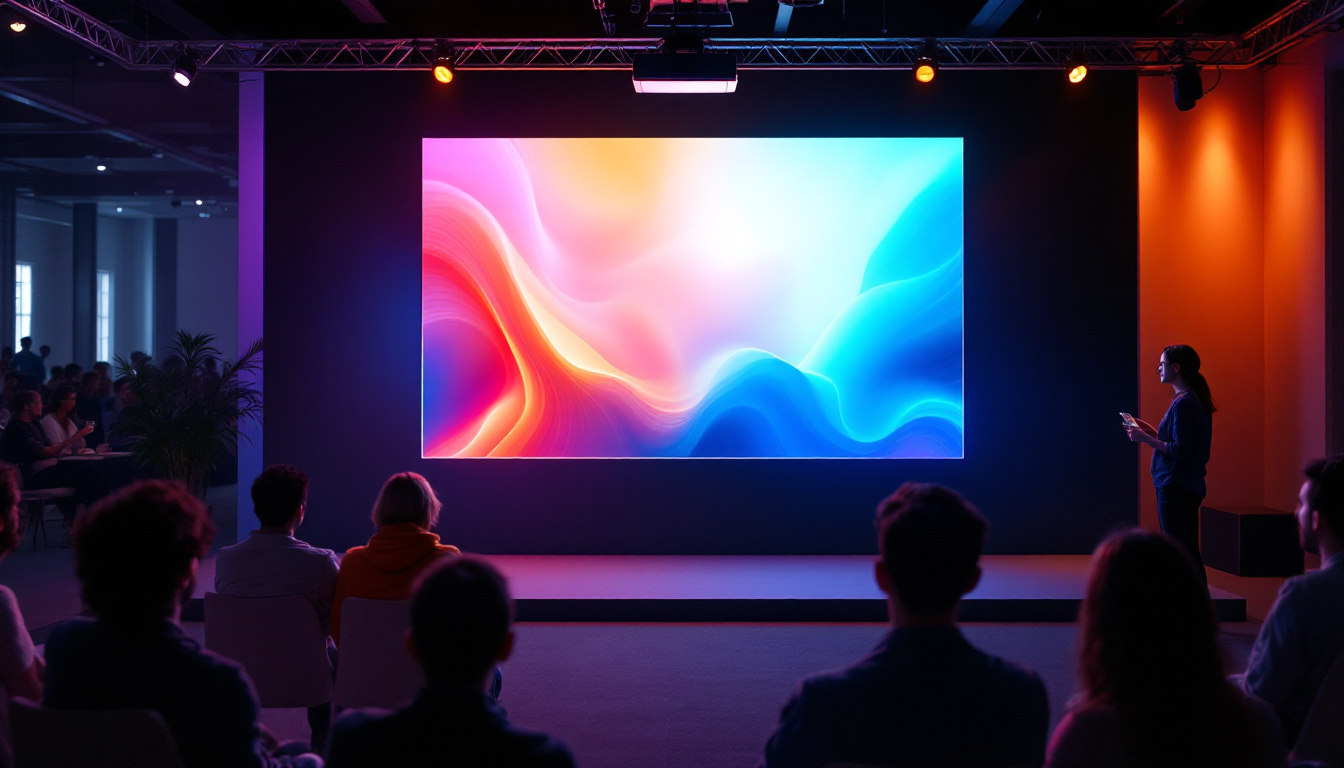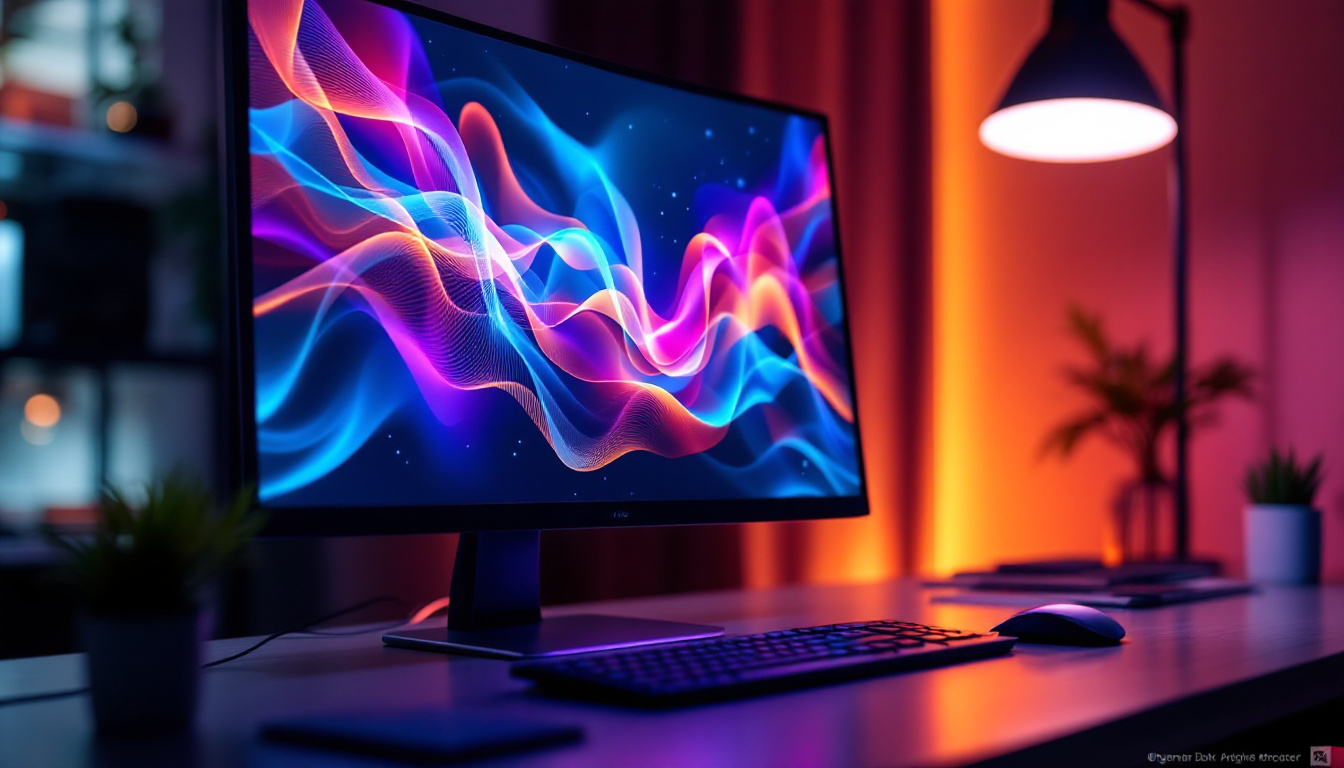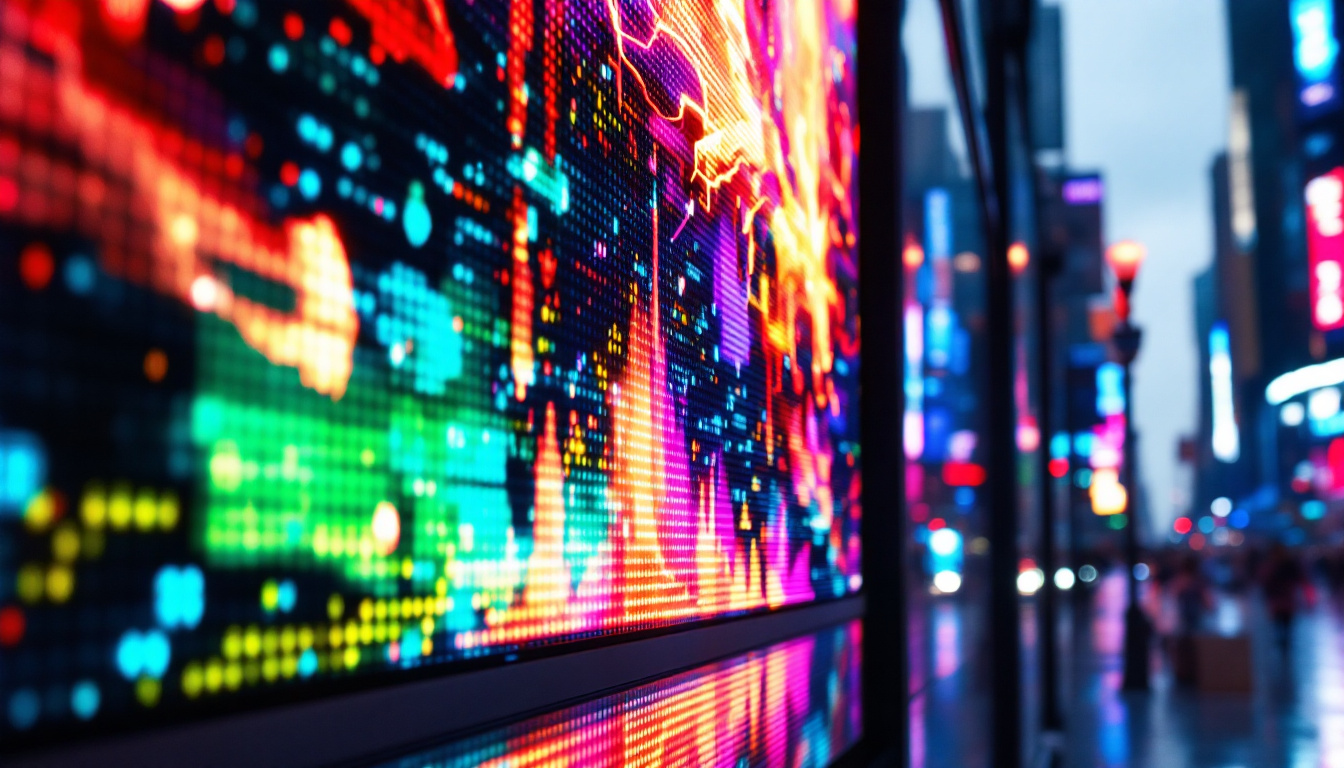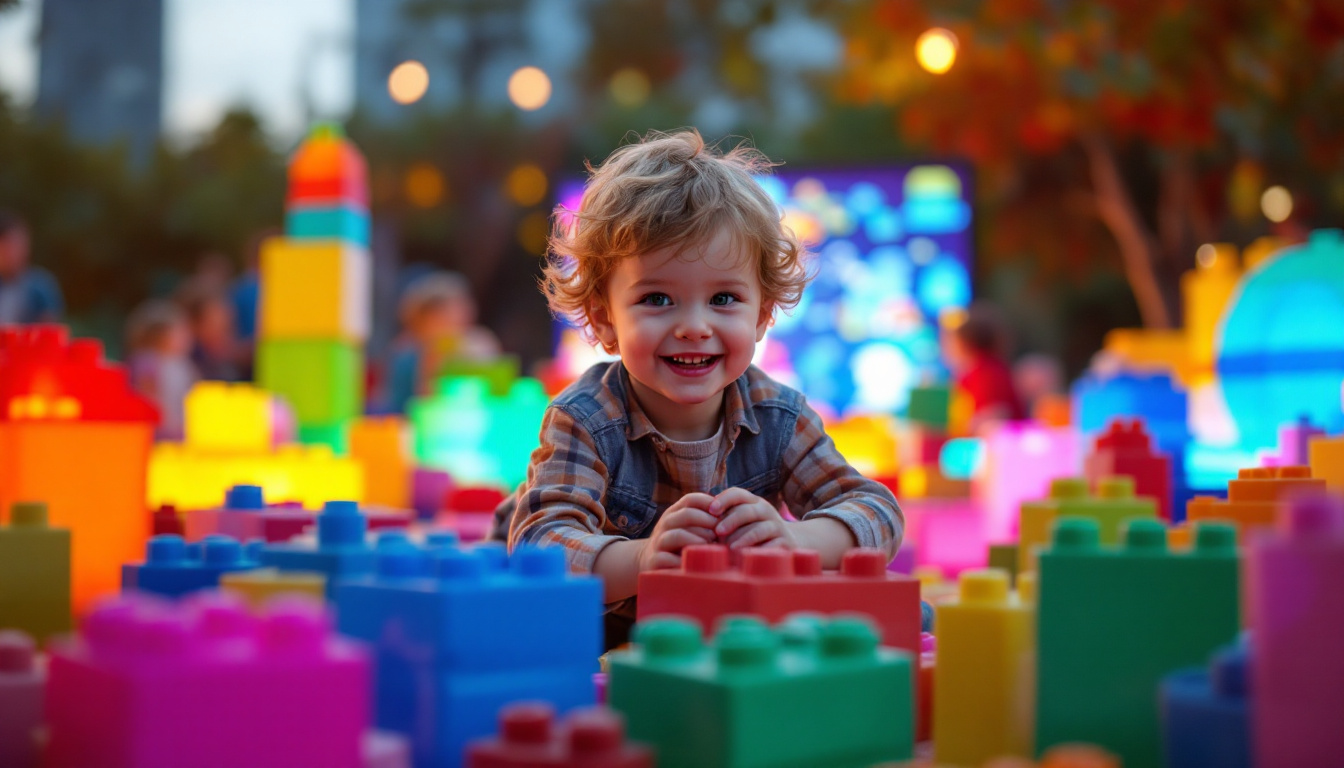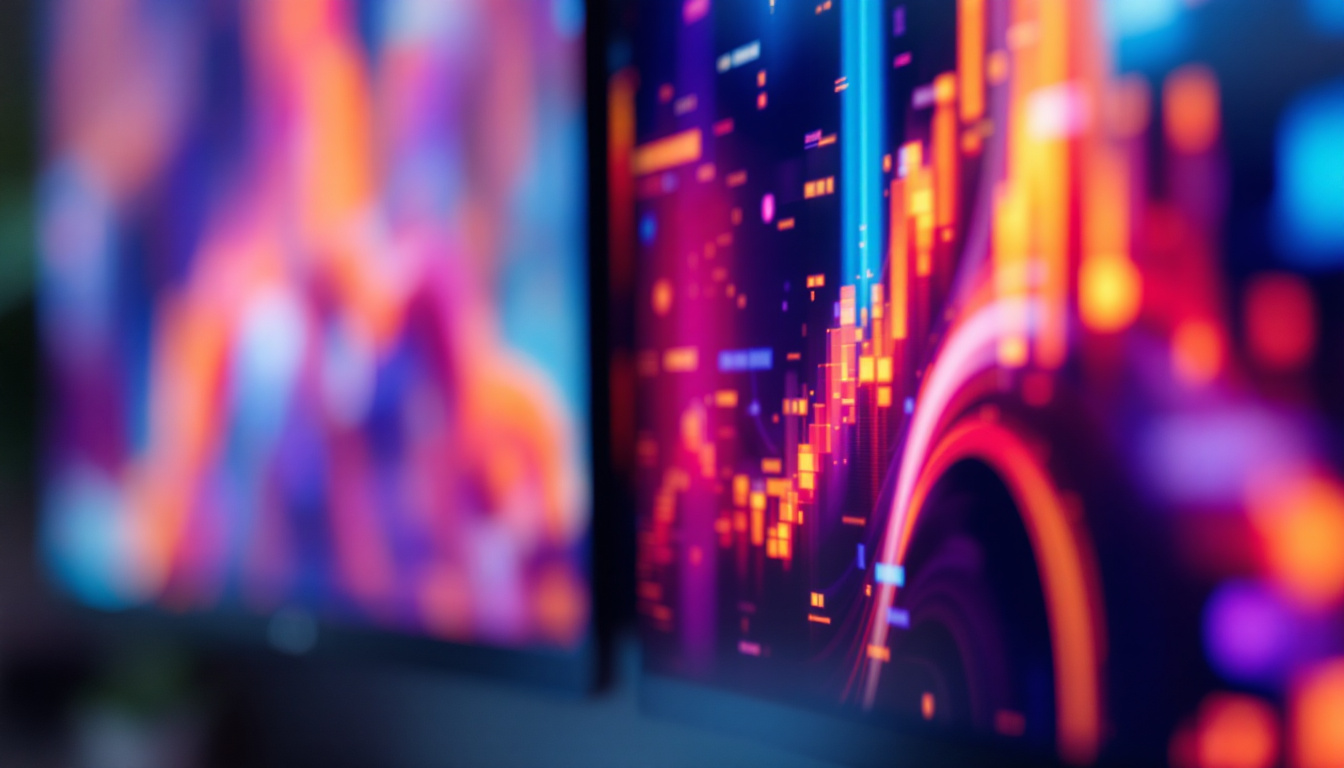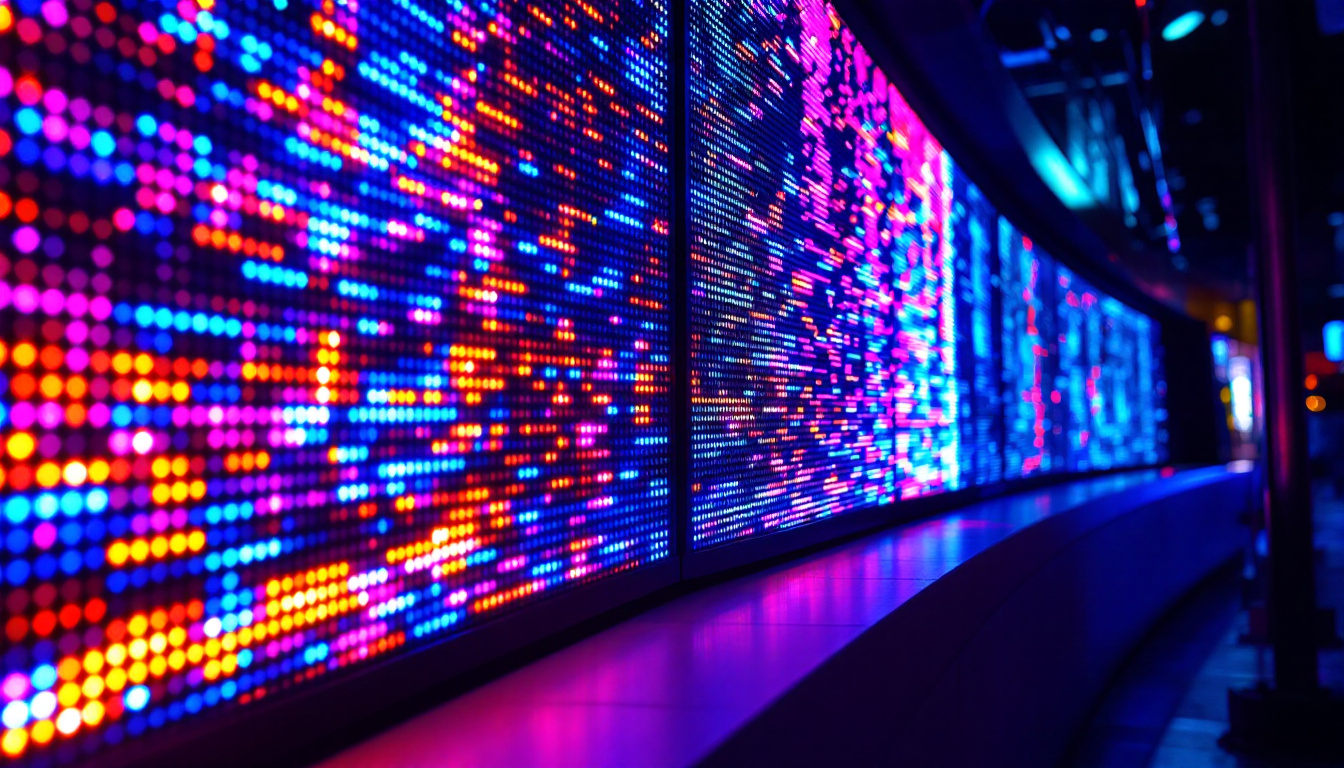In today’s digital age, LED displays have become a ubiquitous part of our lives, from smartphones and televisions to large-scale outdoor billboards. As technology continues to evolve, understanding where to buy these screens and the various types available can be quite overwhelming. This article aims to demystify LED displays, their applications, and where to purchase them.
Understanding LED Displays
LED, or Light Emitting Diode, displays are a type of flat panel display that uses LEDs as a light source. Unlike traditional LCD screens that rely on fluorescent backlighting, LED displays provide brighter, more vibrant images and are generally more energy-efficient. This section will delve into how LED displays work and their various types.
How LED Displays Work
LED displays operate by using a matrix of tiny light-emitting diodes to create images. Each pixel on the screen is made up of red, green, and blue diodes, which can be adjusted in brightness to produce a wide spectrum of colors. This technology allows for high contrast ratios and deeper blacks, making LED displays ideal for various applications.
Moreover, the use of LEDs contributes to a longer lifespan compared to traditional displays. While an average LCD screen might last around 30,000 hours, LED displays can often exceed 100,000 hours of use. This durability makes them a cost-effective choice in the long run.
Types of LED Displays
There are several types of LED displays, each suited for different environments and purposes. The most common types include:
- Direct View LED: These displays consist of individual LEDs that form the entire screen. They are often used for large outdoor signage due to their brightness and visibility in direct sunlight.
- LED-backlit LCD: This type combines traditional LCD technology with LED backlighting, providing better contrast and color accuracy than standard LCDs.
- Organic LED (OLED): OLED screens utilize organic compounds that emit light when electricity is applied. They offer superior color accuracy and flexibility, making them popular in high-end televisions and smartphones.
Applications of LED Displays
LED displays have a wide range of applications across various industries. Their versatility and adaptability make them suitable for both indoor and outdoor use. Below are some of the most common applications.
Advertising and Marketing
One of the most prominent uses of LED displays is in advertising. Large outdoor LED billboards can capture the attention of passersby with vibrant colors and dynamic content. Businesses can easily update their advertisements in real-time, making LED displays an effective tool for marketing campaigns.
Indoor LED screens are also gaining popularity in retail environments. They can be used to display promotions, product information, and even interactive content, enhancing the customer shopping experience.
Entertainment and Events
LED displays play a crucial role in the entertainment industry. From concert stages to sports arenas, these screens provide high-quality visuals that enhance the audience’s experience. They can be used for live feeds, graphics, and even immersive environments that engage viewers.
Additionally, events such as trade shows and exhibitions often utilize LED displays to showcase products and services. Their ability to present information in an eye-catching manner makes them a favored choice for event organizers.
Where to Buy LED Displays
Now that the functionality and applications of LED displays are clear, the next step is knowing where to purchase them. The market for LED displays is vast, with options ranging from online retailers to specialized electronic stores. Below are some of the best places to consider.
Online Retailers
Online shopping has transformed how consumers purchase electronics, including LED displays. Websites like Amazon, eBay, and Best Buy offer a wide range of LED screens from various manufacturers. The advantage of buying online is the convenience and the ability to compare prices and specifications easily.
When purchasing from online retailers, it is essential to read customer reviews and check the return policy. This ensures that the product meets expectations and provides peace of mind in case of any issues.
Specialized Electronics Stores
For those who prefer a more hands-on approach, visiting specialized electronics stores can be beneficial. These stores often have knowledgeable staff who can provide insights into different LED display models and help customers make informed decisions.
Additionally, purchasing from a physical store allows customers to see the display in action, which can be crucial for evaluating picture quality and brightness. Many stores also offer installation services, which can be a significant advantage for larger screens.
Direct from Manufacturers
For businesses or individuals looking to purchase large quantities of LED displays, buying directly from manufacturers can be a cost-effective option. Many manufacturers offer bulk pricing and customization options tailored to specific needs.
Contacting manufacturers directly can also provide access to the latest technology and innovations in LED displays, ensuring that the purchase is future-proof. However, this option may require more research and due diligence to find reputable manufacturers.
Factors to Consider When Buying LED Displays
When purchasing an LED display, several factors should be considered to ensure the best choice for specific needs. Understanding these factors can help avoid buyer’s remorse and ensure satisfaction with the purchase.
Screen Size and Resolution
The size of the LED display is one of the most critical factors to consider. The intended use will largely dictate the appropriate screen size. For instance, a large outdoor billboard will require a much larger display than a screen intended for personal use at home.
Resolution is equally important, as it determines the clarity and detail of the images displayed. Higher resolution screens, such as 4K or 8K, offer sharper images but may come at a higher cost. Balancing size and resolution based on the viewing distance and purpose is essential.
Brightness and Viewing Angle
Brightness is a crucial factor, especially for outdoor displays that need to be visible in direct sunlight. Measured in nits, a higher brightness level ensures better visibility in bright environments. For indoor displays, a lower brightness level may suffice, but it should still be adequate for the lighting conditions of the space.
Viewing angle is another consideration, particularly for displays that will be viewed by a large audience. A wider viewing angle ensures that the image remains clear and vibrant from various positions, enhancing the overall experience for viewers.
Connectivity and Compatibility
Before making a purchase, it is essential to consider the connectivity options available on the LED display. Common connections include HDMI, DisplayPort, and USB. Ensuring compatibility with existing devices, such as computers or media players, can save time and frustration during setup.
Furthermore, some LED displays come with smart features, allowing users to connect to the internet and stream content directly. These features can enhance the functionality of the display, making it a more versatile option.
Maintenance and Care for LED Displays
Once an LED display has been purchased, proper maintenance is essential to ensure its longevity and performance. Regular care can prevent issues and keep the display looking its best.
Cleaning the Screen
Cleaning the LED screen is crucial to maintaining picture quality. Dust and fingerprints can accumulate over time, affecting visibility. It is recommended to use a microfiber cloth and a gentle cleaning solution specifically designed for electronics.
When cleaning, avoid using abrasive materials or harsh chemicals, as these can damage the screen. Regular cleaning can help maintain brightness and clarity, ensuring that the display remains in optimal condition.
Software Updates
For LED displays with smart features, keeping the software updated is vital for performance and security. Manufacturers often release updates that improve functionality or fix bugs. Regularly checking for updates can enhance the user experience and ensure that the display operates smoothly.
Temperature and Environment
LED displays should be kept in environments that are within the recommended temperature range. Excessive heat or humidity can damage the internal components and affect performance. Ensuring proper ventilation and avoiding direct exposure to extreme conditions can prolong the lifespan of the display.
The Future of LED Displays
As technology continues to advance, the future of LED displays looks promising. Innovations in design, efficiency, and functionality are on the horizon, making it an exciting time for consumers and businesses alike.
Emerging Technologies
One of the most significant trends in LED technology is the development of microLED displays. These screens use microscopic LEDs to create images, offering even greater brightness, contrast, and energy efficiency. MicroLED technology has the potential to revolutionize the display industry, providing superior quality in a compact form factor.
Additionally, advancements in flexible LED displays are paving the way for new applications in various industries. These displays can be bent or shaped to fit unique spaces, allowing for innovative designs in advertising, architecture, and more.
Sustainability and Energy Efficiency
With growing concerns about environmental impact, manufacturers are increasingly focusing on sustainability in their production processes. Future LED displays are expected to be more energy-efficient and made from recyclable materials, aligning with global efforts to reduce carbon footprints.
As consumers become more environmentally conscious, the demand for sustainable products will likely influence the direction of LED display technology in the coming years.
Conclusion
LED displays have transformed the way information is presented and consumed across various sectors. Understanding the technology, applications, and where to purchase these displays is crucial for making informed decisions. By considering factors such as screen size, resolution, and maintenance, consumers can ensure they select the right LED display for their needs.
As the industry continues to evolve, staying informed about emerging technologies and sustainability practices will be essential. Whether for personal use or business applications, LED displays will remain a vital part of the digital landscape for years to come.
Discover Cutting-Edge LED Displays with LumenMatrix
Ready to elevate your visual experience with the latest in LED display technology? Look no further than LumenMatrix, a leader in innovative LED solutions. From captivating Indoor and Outdoor LED Wall Displays to dynamic Vehicle and Sports LED Displays, LumenMatrix offers a wide array of products designed to make your brand shine. Whether you’re looking for a Custom LED Display, an All-in-One solution, or even a Transparent LED Display, LumenMatrix has the expertise to bring your vision to life. Check out LumenMatrix LED Display Solutions today and transform the way you communicate visually.

